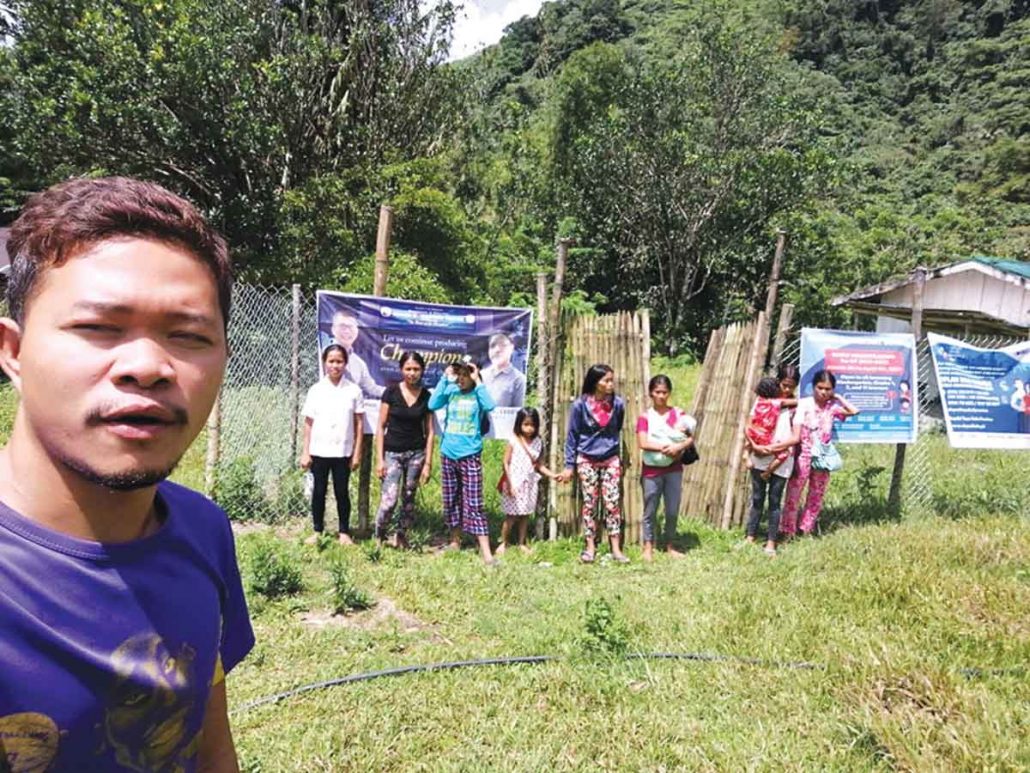
ILOILO – The global health crisis has ushered learning into virtual spaces, among other remote schemes. But what about those in the margins?
Who would have thought there’s a primary school standing in the remotest barangay of Calinog town?
Not only is it far, but there’s no means of transportation – teachers have to traverse a bumpy road for two to three hours just to get there.
The Aglonok Primary School in Barangay Aglonok, 72 kilometers from town proper, is located at the foot of Mount Baloy, the highest mountain in Panay Island.

The school is surrounded by the provinces of Antique, Iloilo and Aklan.
From the town proper, the teachers will ride a motorcycle to Barangay Supanga and walk up to the school as there’s only a footpath.
The Aglonok Primary School caters to Kinder, Grade 1 and Grade 2 learners. This school year, there were 26, all pure blooded Indigenous Peoples (IPs). Four were in Kinder, 15 in Grade 1 and seven in Grade 2.
The school is being managed by two teachers.
Speaking to Panay News was teacher Argy Catolin, who serves as teacher-in-charge in Aglonok Primary School. He handles kindergarten while his co-teacher for grades 1 and 2.
The 29-year-old Catolin of Barangay Cahigon, Calinog was a member of the Panay Bukidnon tribe.
His house is 45 kilometers away from the school. He rides his motorcycle up to Supanga. There, residents would meet him and help him carry modules and other learning materials.

This has been Catolin’s routine for the past three years.
It was challenging, he admitted.
Catolin cited a learner’s house that he has to cross a river six times before getting there.
He said they were going house-to-house as there was no signal and electricity in the area.
Catolin’s time to walk and cross the river is longer than the time he spends teaching.
“Tag-20 minutes lang ang gina-spend namon (each house). Although gamay sila, ang distance sang ila balay tag-one hour lakton,” added Catolin who was a social science major.
Catolin also has to get through the language barrier.
His students speak three native languages: Hiligaynon, Kinaray-a and Aklanon.
It’s challenging for Catolin to discuss the lessons so he was inviting residents that could translate his discussion.
“May ara man nga hapos tudloan, may ara medyo ma-effort ‘kaw gid kay wala sang influence like sa television nga puede ma-ilog. Ila didto sa radyo lang kumbaga pamatian lang nila. Less ang development sa sensory motor so daw medyo mabudlay sila tudloan,” said Catolin.

He was also worried that the village was New People’s Army-infested. He’s thankful they have not yet encountered any problem with the rebels.
In the first years he was assigned in Aglonok Primary School, Catolin recounted telling parents how important education is, especially to the marginalized sector.
He also made parents understand not to only focus on child labor. According to Catolin, they had this notion that if a child finishes second grade, they could just work in the farms.
He encouraged parents to help their children pursue their education.
The nearest elementary school is the Supanga Elementary School, a two-to-three-hour-walk away from the primary school.
Catolin said parents should not mind the expenses in sending their children to college as the government offers a lot of scholarships to the IPs.
“Indi kamo mag-stop nga dira lang kamo kay indi ninyo ma-break ang cycle kang poverty kon mag-untat kamo sa amo lang da nga grade level. Hambal ko mabudlay mangin imol nga wala sang kwarta apang mas mabudlay nga mangin imol nga wala sang kinaalam,” Catolin said.
CHOICE
Catolin said his heart always belongs to his community, and it was his choice to share all the learning he had from college.
“Kinahanglan ko mag-serve sa akon kaliwat. So, gin-assign ako sa IP education school,” said Catolin.
Catolin comes to school every Monday and down to the town proper every Wednesday to print the modules.
“Mahambal ko sang una nga dapat maka-graduate na ako, makapangita ako obra. Pero didto ko na-realize nga ang feeling ko sang una sang elementary ako sobra pa gid ila ginabatyag samtang naga-eskwela sa area nga wala kuryente, signal and daw blank sheet. Daw wala sila kabalo naga-exist ang banwa or city. Didto mo ma-realize nga grabe simple ang pangabuhi pero naka-survive sila,” added Catolin.
HOPE
Being far from the town, the Aglonok Primary School is serving hope to the IP community, especially the learners.
According to Catolin, even if only limited classes are being offered, they’re already a big thing as everything starts with basic.
“Tama kabudlay kay ang ginikanan indi man sila kamaan magsulat or magbasa,” said Catolin.
To encourage the learners to strive harder, Catolin always shares his success story.
“Always ko gina-example sa ila nga ako akon nanay Grade 1 (ang natapos) and si tatay Grade 2. Hambal ko sa kaugalingon ko dapat makatapos gid ko sa pag-eskwela. Bisan nagakarga saging pangabuhian at least may allowance kami kada semana,” said Catolin.
Catolin also has a message to his fellow teachers.
“Sa kapwa ko guro nga na-assign sa bukid, continue lang ang motivation sa self, although I know kis-a madulaan kaw motivation. Kinahanglan isipon ang mga kabataan nga kon nabudlayan kita how much more sanda,” he said.
As to the learners, don’t lose hope, according to Catolin.
“Ara gid ang pagpangamuyo kag determinasyon nga sa urihi makatapos kag magtawhay man ang kaugalingon kag pamilya. Don’t stop dreaming. You have to think beyond sa limitations. Kinahanglan ‘makatapos gid ‘ko ‘ni biskan sa bukid ko naghalin’,” added Catolin.
He thanked private individuals and non-government organizations who have been extending donations to their community, especially to the school./PN







